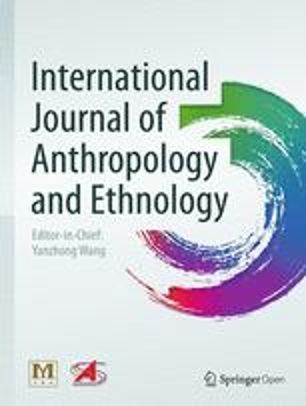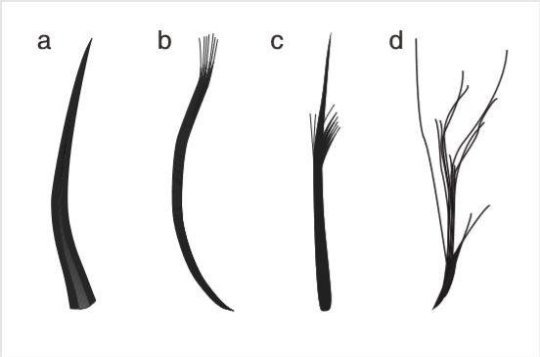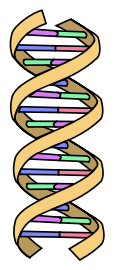Michael J. Behe's Blog, page 553
December 19, 2018
Update: Springer defends publication of creationist paper to Jerry Coyne
 He got a reply within 24 hours, one which he considers “lame and evasive”:
He got a reply within 24 hours, one which he considers “lame and evasive”:
Briefly: Here’s the Paper (Umer, S. Int. j. anthropol. ethnol. (2018) 2: 6. https://doi.org/10.1186/s41257-018-00...). The author, Sarah Umer is Charles Wallace Pakistan Trust Visiting Fellowship at SOAS (recipient: 2016-2017) and her Phd is from Lahore College for Women Universety, Pakistan, according to the South Asia Institute at the University of London.
From Coyne:
But the response is basically a self-exculpation, more or less saying that since the paper was submitted (DUH) and accepted after peer review, they can’t do anything about it. Note that they didn’t answer my questions about the terrible editing (I doubt, given the infelicities of writing and grammatical errors, that it was even edited.)
And of course there’s no point in contacting the author (there’s only one author), as she, as a creationist in Pakistan, is certainly not going to correct her article.
Well, I’m not giving up yet in trying to call Springer’s attention to this travesty. Springer’s management team has no email addresses listed (why is that?), and the CEO, Daniel Ropers, has only a Twitter site that he seems to never check. Nor do the journal’s editors have any contact information. Nevertheless, I tried tweeting at the CEO. (Feel free to retweet it to @DanielRopers, though it’s almost certainly futile.) Jerry Coyne, “Springer writes back, defending its publication of a creationist paper” at Why Evolution Is True
Jerry Coyne seems to need time off before he writes much more about this.
Follow UD News at Twitter!
See also: A Springer journal has published a creationist paper. And Darwinian evolutionary biologist Jerry Coyne, author of Why Evolution Is True, is, needless to say, upset. It’s a good question, though, if we end universalism in science (and that’s all the rage), why creationism in an anthropology and ethnology journal doesn’t follow. Who is Jerry Coyne to say they can’t do that?
and
Ending universalism in science: What will it mean? Wait till IPBES hears from the past lives people, demanding respect for their perspective. The term “We were all one-celled creatures once” could take on an entirely new meaning.
Copyright © 2018 Uncommon Descent . This Feed is for personal non-commercial use only. If you are not reading this material in your news aggregator, the site you are looking at is guilty of copyright infringement UNLESS EXPLICIT PERMISSION OTHERWISE HAS BEEN GIVEN. Please contact legal@uncommondescent.com so we can take legal action immediately.
Plugin by Taragana
New journal: The human mind from a computer science perspective
The Blyth Institute’s new journal will offer a focus on artificial intelligence and philosophy as well as philosophical questions in mathematics and engineering
 The Blyth Institute, a think tank that explores the relationships between biology, cognitive science, and engineering, has launched a new journal, Communications of the Blyth Institute with Eric Holloway as Managing Editor and Jonathan Bartlett as Associate Editor.
The Blyth Institute, a think tank that explores the relationships between biology, cognitive science, and engineering, has launched a new journal, Communications of the Blyth Institute with Eric Holloway as Managing Editor and Jonathan Bartlett as Associate Editor.
Communications is intended as a discussion forum for fresh ideas in a variety of areas, including philosophy of mind as seen from a computer science perspective. It is open to ID-friendly ideas. The inaugural issue covers such topics as
Eric Holloway, Creativity and Machines, 13
Jonathan Bartlett, Simplifying and Refactoring Introductory Calculus, 17
T. M. Koch, Recategorizing the Human Senses, 29
Casey Sudduth, The Abuse of Scientific Authority, 47
Both print and digital subscriptions are available. The editors are also looking for contributors with expertise in the relevant areas.
See also: AI and the future of murder (Jonathan Bartlett)
Did AI show that we are “a peaceful species” triggered by religion (Jonathan Bartlett)
Has neuroscience disproved thinking? (Eric Holloway)
and
Human intelligence as a halting oracle (Eric Holloway)
Copyright © 2018 Uncommon Descent . This Feed is for personal non-commercial use only. If you are not reading this material in your news aggregator, the site you are looking at is guilty of copyright infringement UNLESS EXPLICIT PERMISSION OTHERWISE HAS BEEN GIVEN. Please contact legal@uncommondescent.com so we can take legal action immediately.
Plugin by Taragana
December 18, 2018
Does Dr. Sutter claim to have no beliefs that guide his search for truth?
An astrophysicist offers a warning about misusing science:
Here’s a warning, from me to you: don’t look to science for cheap validation, ever, because it will end up breaking your heart.
The process of science simply doesn’t care what the answer is. Sure, individual scientists may and will have their individual biases and preferences and hopes for a result. But in science the ultimate arbiter is the universe itself. The data we collect decide the outcomes, despite our individual preferences.Paul M.Sutter, “Stop Using Science To Validate Your Beliefs” at Forbes
But, of course, the data people collect is partly a function of what they look for which is, in turn, guided by their beliefs. And if they did not have beliefs, they would not do science at all. Hence the point of the title question.
The other day, for example, we ran a story about how psychologists began, in recent years, to study religious groups in terms of how people who belong to them make use of available coping skills. Psychologists didn’t used to do that because they didn’t believe they would find those skills in such groups.
It would be helpful if we knew more about what Dr. Sutter means by “cheap validation.” Also, what about approaches to science that couldn’t possibly be falsified?
Think, for example, of the researchers whose work seemed “very surprising,” whose conclusions they fought against, who are now announcing that the work. does NOT, after all, disprove Darwin. That’s because “Darwinism” is framed in such a way that it’s impossible to pin down and even fossil rabbits in the Cambrian would not disprove it.
Follow UD News at Twitter!
See also: Psychology: Study of religion takes evidence-based turn Association with things most people see as positive does not, of course, make a religion “true.” It does, however, make one wonder about the perspective of psychologists who don’t seem able to recognize the pattern.
and
“Adam and Eve” researchers say their work does NOT disprove Darwin Well, if their findings support orthodox Darwinian evolution, why did they find them “very surprising” and why did they fight against them? Isn’t that rather unscientific of them?
Copyright © 2018 Uncommon Descent . This Feed is for personal non-commercial use only. If you are not reading this material in your news aggregator, the site you are looking at is guilty of copyright infringement UNLESS EXPLICIT PERMISSION OTHERWISE HAS BEEN GIVEN. Please contact legal@uncommondescent.com so we can take legal action immediately.
Plugin by Taragana
A Springer journal has published a creationist paper

And Darwinian evolutionary biologist Jerry Coyne, author of Why Evolution Is True, is, needless to say, upset:
Googling the title of the paper below so I could find it on the Internet, I see that at least one evolutionary-biology website has posted about it. I’m not going to read what it said until after I post this, as I don’t want to repeat its ideas. But if you have the stomach, have a look at the paper below, published in Springer’s International Journal of Anthropology and Ethnology, which I assume is a fairly respectable journal as it’s published by the money-hungry but scientifically credible Springer firm.Jerry Coyne, “Creationist paper gets into a Springer journal” at Why Evolution Is True
Here’s the Abstract:
Abstract: here is a consensus among evolutionists today that man first appeared in Africa approximately four million years ago. Others counter this theory saying, “… when shall we speak of man as man”? The timeline they give is approximately one million years and to fully understand one million years is still a difficult task.
However, another even better way to understand time and man is to study it in terms of generations. So, keeping in mind that primitive people married and had children early, twenty years will make an average generation. According to this there would be 50,000 generations in a million years. Keeping this in mind if we calculate generations we find that 250 generations back take us to the time when written history began. While, another 250 generations back would take us to the time (10,000 years ago), when cultivation began, and man started settled life. Now we are left with 49,500 generations of men, plus a time span of 990,000 years. Keeping these statistics in mind let us ask the question once more, when should we speak of man as man?
Therefore, this paper attempts not only to understand the timeframe “when we can really call Man? – Man” in light of the so-called history of human evolution but also to understand that if the specie roaming the earth for a million years was truly man’s ancestor, as is claimed by Charles Darwin. Then what took man’s ancestor so long to show signs of development that we only witness in the last 12000 years.
Moreover, while keeping man’s progress under consideration of the last 12000 years, it will further shed light on why there are serious reservations about Charles Darwin theory of human evolution. As many scientists, evolutionists, archeologist and different religious scriptures strongly claim that man came to the earth fully developed and did not evolve from a lesser specie. (open access) Umer, S. Int. j. anthropol. ethnol. (2018) 2: 6. https://doi.org/10.1186/s41257-018-00... More.
The author, Sarah Umer, is Charles Wallace Pakistan Trust Visiting Fellowship at SOAS (recipient: 2016-2017) and her Phd is from Lahore College for Women University, Pakistan, according to the South Asia Institute at the University of London.
Coyne links to the critique at Filthy Monkey Men and asks others to join him in writing to Springer to complain about “Umer’s misstatments and lies”. We’d recommend finding out a little more first.
It’s a good question, though, if we end universalism in science (and that’s all the rage), why creationism in an anthropology and ethnology journal doesn’t follow. Who is Jerry Coyne to say they can’t do that?
What if they published Native American creationism, as propounded by the late Vine Deloria, Jr.? People who don’t believe in universalism will need to think of an alternative answer for that.
Follow UD News at Twitter!
See also: Ending universalism in science: What will it mean? Wait till IPBES hears from the past lives people, demanding respect for their perspective. The term “We were all one-celled creatures once” could take on an entirely new meaning.
Science journal embraces reincarnation research in support of transgender ideology Readers, can you offer “sciencey” suggestions for making reincarnation a part of science? Bring in Darwinism as much as you can; that’s sure to sell it. Just think: Soon, the new “anti-science” will mean not believing in past lives.
and
The perfect storm: Darwinists meet the progressive “evolution deniers” — and cringe… Double down cringe…
Copyright © 2018 Uncommon Descent . This Feed is for personal non-commercial use only. If you are not reading this material in your news aggregator, the site you are looking at is guilty of copyright infringement UNLESS EXPLICIT PERMISSION OTHERWISE HAS BEEN GIVEN. Please contact legal@uncommondescent.com so we can take legal action immediately.
Plugin by Taragana
Ending universalism in science: What will it mean?

pi in mosaic, Berlin/Holger Motzkau voilà l’ennemi!
The poster wall version is “end colonialism, racism, sexism… ” Actually, the new mood will probably end focused, productive activity in science, says a culture critic. Consider:
In January, leading members of the panel published an article in the journal Science, announcing a “paradigm shift” in how it would approach its mission. They claim the scientific model on which the IPBES [(Intergovernmental Panel on Biodiversity and Ecosystem Services)] was founded is “dominated by knowledge from the natural sciences and economics,” and prone to adopt the “generalizing perspective” of “western science.” Consequently, they argue, it does not provide space for the humanities and social sciences, nor does it recognize the knowledge and values of local and indigenous peoples.
The article, which sparked an acrimonious row within the research community, came after several years in which IPBES papers and reports had developed “a pluralistic approach to recognizing the diversity of values.” The panel has now officially adopted a new paradigm that “resist[s] the scientific goal of attaining a universally applicable schema,” while seeking to “overcome existing power asymmetries between western science and local and indigenous knowledge, and among different disciplines within western science.”
But what will replace the universals of science?
As critics have warned, there is a danger here of losing clarity and focus, leading to less effective advocacy. IPBES papers and reports now bulge with extensive discussions of cultural particularism and equity, threatening at times to become an altogether parallel mission. Yet in 2016, when the panel delivered its most comprehensive assessment to date, the summary for policymakers included barely any information about the economic costs of ecological damage.
Indeed, despite its supposed skepticism, there is an air of fantasy surrounding this discourse. Even if there are areas where it is inappropriate to impose a purely scientific outlook, it is disingenuous to pretend that, with a particular goal in view, all perspectives are equally useful. Wessie du Toit, “Testing the Limits of Universalism in Science” at Areo Magazine

News at Linked In:
Wait till IPBES hears from the past lives people, demanding respect for their perspective. The term “We were all one-celled creatures once” could take on an entirely new meaning.
Do you ever get the feeling that science is past some kind of peak? (O’Leary for News)
Follow UD News at Twitter!
See also: Science journal embraces reincarnation research in support of transgender ideology Readers, can you offer “sciencey” suggestions for making reincarnation a part of science? Bring in Darwinism as much as you can; that’s sure to sell it. Just think: Soon, the new “anti-science” will mean not believing in past lives.
and
The perfect storm: Darwinists meet the progressive “evolution deniers” — and cringe… Double down cringe…
Copyright © 2018 Uncommon Descent . This Feed is for personal non-commercial use only. If you are not reading this material in your news aggregator, the site you are looking at is guilty of copyright infringement UNLESS EXPLICIT PERMISSION OTHERWISE HAS BEEN GIVEN. Please contact legal@uncommondescent.com so we can take legal action immediately.
Plugin by Taragana
Jonathan Bartlett: The First Law of Automation

Jonathan Bartlett
is Think!:
The worst trap that people who are pursuing automation fall into is the desire to automate everything. That’s usually a road to disaster. Automation is supposed to save time and money, but it can wind up costing you both if you don’t carefully consider what you automate.
How Automation Goes Wrong

Elon Musk, Chairman and CEO of Tesla
Elon Musk found this out the hard way. His original dream called for the Model 3 to be built almost entirely by robots. He believed that automation would increase the speed and decrease the costs of his production line. However, as GM found out in the 1980s, when an automated line goes wrong, you wind up automating failure instead of success. Apart from the fact that the failure is happening on a bigger scale than formerly, you must freeze the entire production line while specialists determine its cause(s).
Full automation is possible but the time, money, and effort required to get it right usually don’t end up being worthwhile. It tends to work best with very mature production tasks where every possible contingency is well-known and well-accounted for. More. Jonathan Bartlett, “Be Choosy About What You Automate!” at Mind Matters
Jonathan Bartlett is the Research and Education Director of the Blyth Institute.
Also by Jonathan Bartlett: AI and the Future of Murder If I kill you but upload your mind into an android, did I murder you or just modify you?
Self-driving vehicles are just around the corner On the other side of a vast chasm…
Copyright © 2018 Uncommon Descent . This Feed is for personal non-commercial use only. If you are not reading this material in your news aggregator, the site you are looking at is guilty of copyright infringement UNLESS EXPLICIT PERMISSION OTHERWISE HAS BEEN GIVEN. Please contact legal@uncommondescent.com so we can take legal action immediately.
Plugin by Taragana
Proven: If you torture a Big Data enough, it will confess to anything
 The Texas Sharpshooter has been known to inflict that type of pain:
The Texas Sharpshooter has been known to inflict that type of pain:
You will get a chortle or two from Spurious Correlations, a web page devoted to graphically persuasive relationships among pairs of sets of entirely unrelated data. For example, you can see the graph of “US spending on science, space and technology” superimposed on that of “Suicides by hanging, strangulation and suffocation.” The staggering 99.79% overlap is a classic in correlation without causation.
Likewise, “Per capita cheese consumption” and “People who died by becoming tangled in their bedsheets” has a correlation of 94.71%. And the correlation between “People who drowned after falling out of a fishing boat” and the “Marriage rate in Kentucky” is 95.24%.
Common sense tells us to treat these coincidences as jokes. But in his fascinating new book The AI Delusion, economics professor Gary Smith reminds us that computers don’t have common sense. He also notes that, as data gets larger and larger, nonsensical coincidences become more probable, not less. Robert J. Marks, “Study Shows Eating Raisins Causes Plantar Warts” at Mind Matters
 Robert J. Marks is one of the authors of Introduction to Evolutionary Informatics.
Robert J. Marks is one of the authors of Introduction to Evolutionary Informatics.
See also: Robert J. Marks: Human Consciousness May Not Be Computable One model of consciousness would mean that conscious computers are a physical impossibility
and
AI that can read minds? Deconstructing AI hype
Copyright © 2018 Uncommon Descent . This Feed is for personal non-commercial use only. If you are not reading this material in your news aggregator, the site you are looking at is guilty of copyright infringement UNLESS EXPLICIT PERMISSION OTHERWISE HAS BEEN GIVEN. Please contact legal@uncommondescent.com so we can take legal action immediately.
Plugin by Taragana
December 17, 2018
Planets with oxygen not necessarily good candidates for ET life?

oxygen
Researchers have found that the presence of oxygen in a planet’s atmosphere may not be a strong indicator of life:
Simulating in the lab the atmospheres of planets beyond the solar system, researchers successfully created both organic compounds and oxygen, absent of life.
The findings, published Dec. 11 by the journal ACS Earth and Space Chemistry, serve as a cautionary tale for researchers who suggest the presence of oxygen and organics on distant worlds is evidence of life there.
“Our experiments produced oxygen and organic molecules that could serve as the building blocks of life in the lab, proving that the presence of both doesn’t definitively indicate life,” says Chao He, assistant research scientist in the Johns Hopkins University Department of Earth and Planetary Sciences and the study’s first author. “Researchers need to more carefully consider how these molecules are produced.”
…
The research team found multiple scenarios that produced both oxygen and organic molecules that could build sugars and amino acids—raw materials for which life could begin—such as formaldehyde and hydrogen cyanide.
“People used to suggest that oxygen and organics being present together indicates life, but we produced them abiotically in multiple simulations,” He says. “This suggests that even the co-presence of commonly accepted biosignatures could be a false positive for life.”
Johns Hopkins University, “Alien imposters: Planets with oxygen don’t necessarily have life” at Phys.org
Paper. (paywall)
Follow UD News at Twitter!
See also: Oxygen on the early Earth: More potential plot twists than a long-running soap…
But if this find holds up, it could link up with detection of life forms very early in the planet’s history.
See also: Researchers: Earth’s oxygen rose and fell several times before the Great Oxidation Event 2.2 bya
Photosynthesis pushed back even further. Time to revisit the “Boring Billion” claim
Researchers: Extreme fluctuations in oxygen levels, not gradual rise, sparked Cambrian explosion Explanations of the dramatic Cambrian explosion of life forms (540 million years ago) are a cottage industry, with arguments about oxygen a staple of the discussion. At times, it feels like trying to understand World War II without allowing for the possibility that any intention underlay any of the events. Maybe that’s why the issues can’t be resolved.
Maverick theory: Cambrian animals remade the environment by generating oxygen
Did a low oxygen level delay complex life on Earth?
There was only a small oxygen jump
Animals didn’t “arise” from oxygenation, they created it, researchers say
Theory on how animals evolved challenged: Some need almost no oxygen
New study: Oxygenic photosynthesis goes back three billion years
Enough O2 long before animals?
Life exploded after slow O2 rise?
Copyright © 2018 Uncommon Descent . This Feed is for personal non-commercial use only. If you are not reading this material in your news aggregator, the site you are looking at is guilty of copyright infringement UNLESS EXPLICIT PERMISSION OTHERWISE HAS BEEN GIVEN. Please contact legal@uncommondescent.com so we can take legal action immediately.
Plugin by Taragana
Feathers originated 70 million years earlier than thought

The four feather types: filaments, filament bunches, tufted filament, down feather/Zixiao Yang
From ScienceDaily:
An international team of palaeontologists, which includes the University of Bristol, has discovered that the flying reptiles, pterosaurs, actually had four kinds of feathers, and these are shared with dinosaurs — pushing back the origin of feathers by some 70 million years.
…
Professor Mike Benton from the University of Bristol’s School of Earth Sciences, said: “We ran some evolutionary analyses and they showed clearly that the pterosaur pycnofibres are feathers, just like those seen in modern birds and across various dinosaur groups.
“Despite careful searching, we couldn’t find any anatomical evidence that the four pycnofibre types are in any way different from the feathers of birds and dinosaurs. Therefore, because they are the same, they must share an evolutionary origin, and that was about 250 million years ago, long before the origin of birds.”
Birds have two types of advanced feathers used in flight and for body smoothing, the contour feathers with a hollow quill and barbs down both sides.
These are found only in birds and the theropod dinosaurs close to bird origins. But the other feather types of modern birds include monofilaments and down feathers, and these are seen much more widely across dinosaurs and pterosaurs.
The armoured dinosaurs and the giant sauropods probably did not have feathers, but they were likely suppressed, meaning they were prevented from growing, at least in the adults, just as hair is suppressed in whales, elephants, and hippos. Pigs are a classic example, where the piglets are covered with hair like little puppies, and then, as they grow, the hair growth is suppressed.
Professor Benton added: “This discovery has amazing implications for our understanding of the origin of feathers, but also for a major time of revolution of life on land.
“When feathers arose, about 250 million years ago, life was recovering from the devasting end-Permian mass extinction. Paper. (paywall) – Zixiao Yang, Baoyu Jiang, Maria E. McNamara, Stuart L. Kearns, Michael Pittman, Thomas G. Kaye, Patrick J. Orr, Xing Xu, Michael J. Benton. Pterosaur integumentary structures with complex feather-like branching. Nature Ecology & Evolution, 2018; 3 (1): 24 DOI: 10.1038/s41559-018-0728-7 More.
It certainly is “amazing,” as Professor Benton says, that a complex array of features appeared 250 million years ago, rather abruptly, just as life was recovering from the Permian extinction. Would anyone have predicted that? Talk about “fossil rabbits in the Cambrian.”
Follow UD News at Twitter!
See also: The Founding Feathers?
and
Dinosaur found with preserved tail feathers, skin
Copyright © 2018 Uncommon Descent . This Feed is for personal non-commercial use only. If you are not reading this material in your news aggregator, the site you are looking at is guilty of copyright infringement UNLESS EXPLICIT PERMISSION OTHERWISE HAS BEEN GIVEN. Please contact legal@uncommondescent.com so we can take legal action immediately.Plugin by Taragana
“Adam and Eve” researchers say their work does NOT disprove Darwin
 Remember the recent study in which Adam and Eve practically reappeared and extant species turned out to be only about 100,000 years old? The researchers, who found their own conclusion “very surprising” and “fought against it” are anxious that the world know that none of it disproves Darwin:
Remember the recent study in which Adam and Eve practically reappeared and extant species turned out to be only about 100,000 years old? The researchers, who found their own conclusion “very surprising” and “fought against it” are anxious that the world know that none of it disproves Darwin:
Shortly after the Daily Mail published its article under the headline “All humans may be descended from just TWO people and a catastrophic event almost wiped out ALL species 100,000 years ago, study suggests,” Thaler and Stoeckle sent out this clarification: “Our study is grounded in and strongly supports Darwinian evolution, including the understanding all life has evolved from a common biological origin over several billion years. Our study follows mainstream views of human evolution. We do not propose there was a single ‘Adam’ or ‘Eve.’ We do not propose any catastrophic events.”
On Dec. 4, the authors added the same statement to the top of the published study on the website of The Rockefeller University, where Stoeckle is a senior research associate. I attempted to contact Stoeckle through the university to ask how, exactly, the study supports Darwinian evolution. A university representative sent a copy of the statement published by the Daily Mail and did not respond to further requests for an explanation.Julie Borg, “Researchers deny their work disproves Darwin” at World
Well, if their findings support orthodox Darwinian evolution, why did they find them “very surprising” and why did they fight against them? Isn’t that rather unscientific of them?
Follow UD News at Twitter!
See also: Adam and Eve reappear in a recent study Or someone does. We haven’t quite figured this out yet.
Study: Species are “compact clusters in the vastness of empty sequence space.”
and
Startling Result–90% of Animals Less than 200 kya
Copyright © 2018 Uncommon Descent . This Feed is for personal non-commercial use only. If you are not reading this material in your news aggregator, the site you are looking at is guilty of copyright infringement UNLESS EXPLICIT PERMISSION OTHERWISE HAS BEEN GIVEN. Please contact legal@uncommondescent.com so we can take legal action immediately.
Plugin by Taragana
Michael J. Behe's Blog
- Michael J. Behe's profile
- 219 followers



